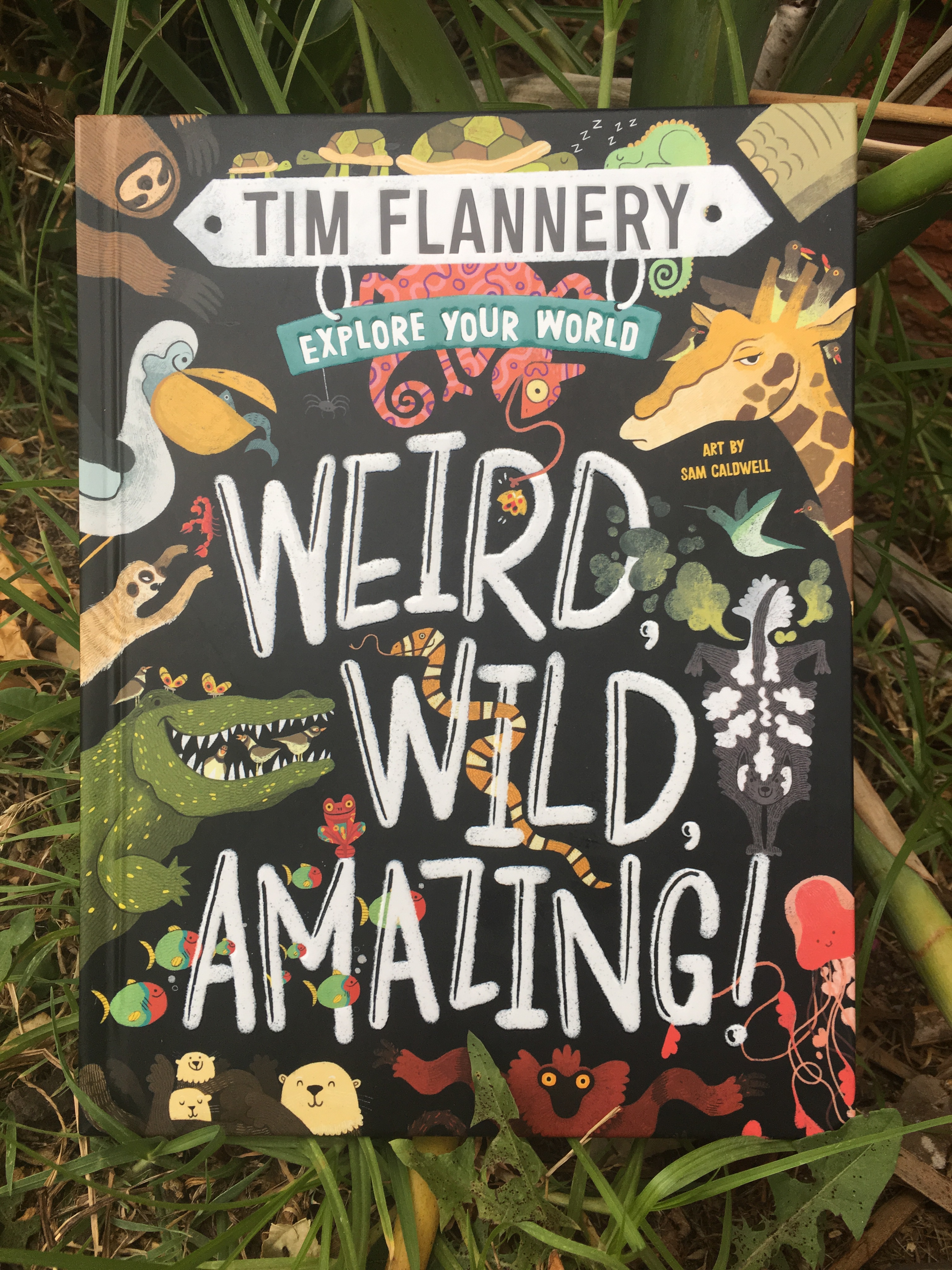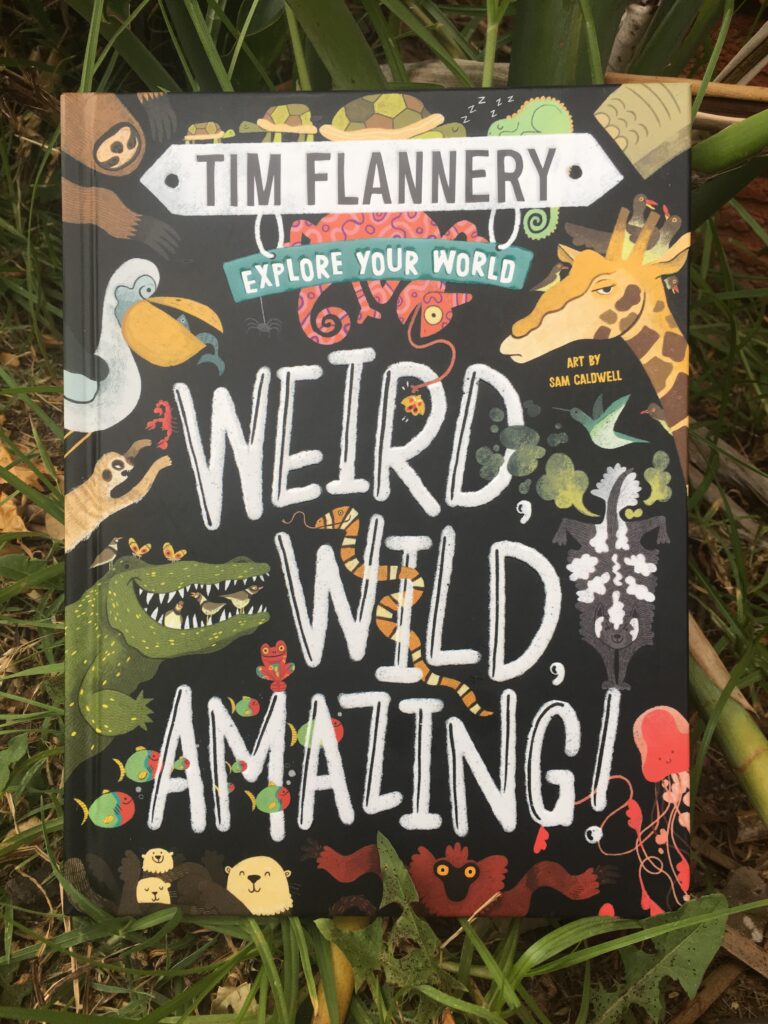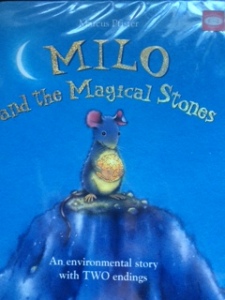Did you know that whales once walked? Some crabs actually live up in trees? How about Platypuses who cannot see, hear or smell underwater but use their bills to pick up on any tiny electrical impulses?

This book has it all and with the vibrant accompanying illustrations by Sam Caldwell, children will lap up the bite size pieces of information about the vast variety of animals that live in the different habitats on Earth.
Explore your world: Weird, Wild, Amazing by Tim Flannery delves into concepts like climate change, evolution, fossils, habitats, extinction and conservation. It is also brimming with amazing facts not only about such a diverse range of animals but many that you may not have heard about before.
Each chapter outlines facts about how climate changes is effecting particular animals – mostly negative, although the jelly fish will be quite happy! And because of this, this book is a great tool to use to show children just how important it is for us to act now – not later – as it isn’t just us who will be effected by the changes, most animals will be harmed too.
This book is really well set out with large bold headings, colourful pages and illustrations of the animals and habitat. The information is easy to understand yet still scientific enough for the young passionate scientist!
Teachers and libraries should have a copy of this in their classroom as there is always a child who loves learning about animals. It also has so many links to sustainability, numeracy, literacy, science, geography, history and many more! It’s a book that can be linked in so many ways and one which we need in the classroom to foster that change in attitude.
TEACHING LINKS
SCIENCE/LITERACY
Students can choose their own animal to research and design the layout of their information similar to how this book has.
GEOGRAPHY/SUSTAINABILITY
Plot where different animals – who will be affected by climate change – live. Explore the different changes and where these animals might end up.
NUMERACY/SUSTAINABILITY
Choose one type of animal and explore how many varieties there are of that species. Graph the distances some animals fly or swim. Compare poo size or egg size! There are so many great links – see what your students can discover.


